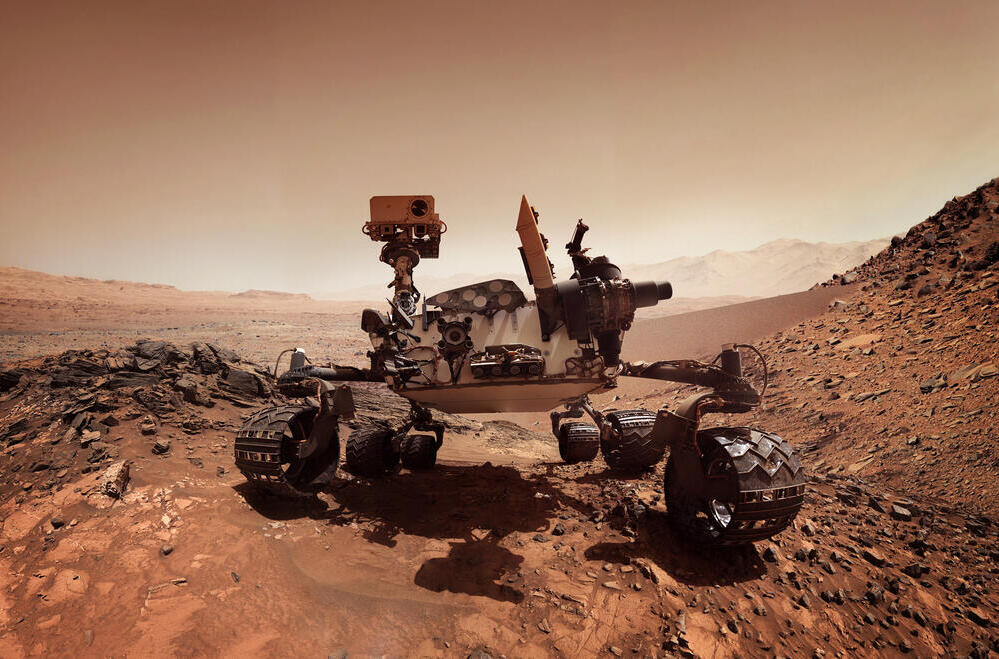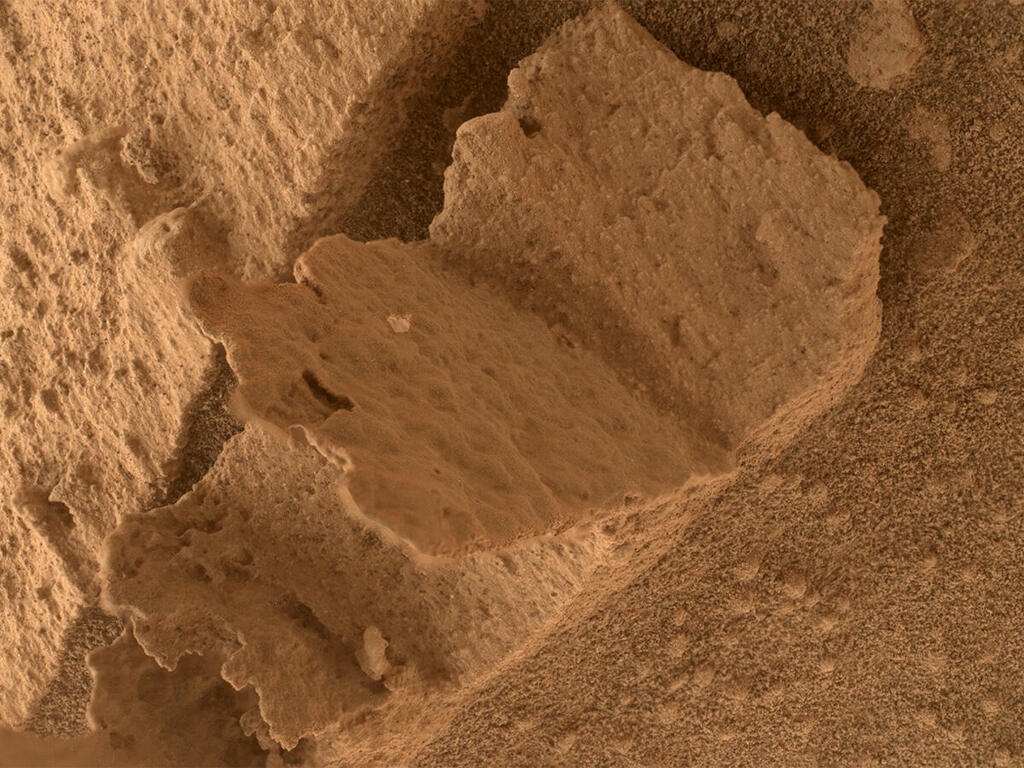NASA's Curiosity Mars rover took a close-up picture of a rock nicknamed Terra Firme, whose shape resembles an open book. The picture was taken with a specialized camera called the Mars Hand Lens Imager (MAHLI).
At just over an inch in width, the rock's odd shape is actually not an unusual event, as Martian rocks are often shaped by water seeping through the crevices, bringing with it the harder minerals that aid in the long-term erosion of the rock's form.
In this case, following sand storms and very strong winds, the rock was eroded over a long period of time until it took its current shape, almost perfectly resembling an open book.
The rover Curiosity is a mobile laboratory, launched back in November 2011 from Florida's Cape Canaveral and finally landed on Mars in August 2012, on a part of Mars called Gale Crater.
NASA launched Curiosity as part of a long-term mission to investigate Mars in ways previously uncharted. The lab is unmanned and operated by the Jet Propulsion Laboratory and California Institute of Technology.
The mission aims to unveil any life that may exist on Mars, and get a clearer picture regarding climate conditions on the red planet, and whether those could ever sustain human life or even enable humanity to build structures on certain territories of Mars that could sustain human life artificially.
This could come across as incubators with living quarters, not unlike what you see in research stations at the North Pole, but on a different scale.
In order to achieve said objectives, eight scientific goals have been designated. Equipped with innovative technology, including cameras, spectrometers and sensors, the rover has conducted experiments and intelligence-gathering expeditions to help scientists understand both the history and the evolution of this unique planet.
The most prominent discoveries thus far has been evidence of ancient water ravines and the presence of organic molecules, indicating that at some point in the past microbiological life forms had been sustained on Mars.



